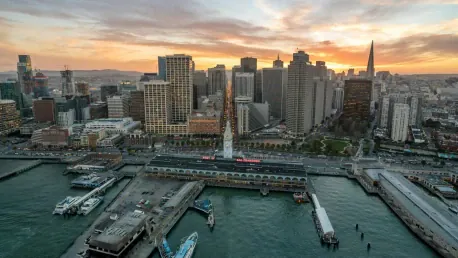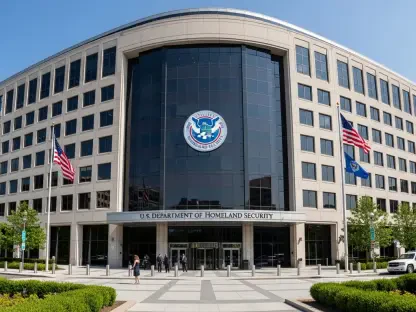The San Francisco Municipal Transportation Agency (SFMTA) faces a $50 million budget shortfall, prompting proposals to reduce services on five active Muni lines. The community has responded passionately to the proposed service cuts, with protests and public outcry illustrating the vital role that Muni services play in the daily lives of residents. This article explores the heated debate and protests surrounding these proposed cuts.
Community Backlash
Rally Against Service Cuts
The recent rally organized by the Muni Now, Muni Forever coalition and the San Francisco Transit Riders (SFTR) drew around 100 impassioned protesters. Gathering at the site of the proposed changes, participants carried signs with messages such as “Save Muni” and “Don’t DOGE Muni” that dominated the scene. This show of force reflected the deep concern and commitment of the community to preserving the Muni lines that many depend on for their daily commutes.
Speakers at the rally highlighted the critical importance of the Muni service, making emotional appeals to protect an infrastructure upon which so many rely. The protesters, a diverse mix of individuals from grassroots organizers to schoolchildren, aimed to amplify the call to action against the service reductions. Personal testimonies underscored the argument that Muni is an essential aspect of living in San Francisco, providing affordable and reliable transportation options for the city’s residents.
Diverse Voices of Protest
The voices of protest at the rally were varied, yet unified in their message: the proposed service cuts would be detrimental to the lives of many San Franciscans. Grassroots organizers detailed the detrimental impact on the community, emphasizing the increased travel times and inconvenience that would be faced, particularly by lower-income residents and those without access to personal vehicles. Schoolchildren added their voices, portraying a future where their daily routines would be heavily disrupted without reliable Muni service.
Additionally, the rally featured speeches from several prominent figures in the community. One such speaker, Mc Allen, a Muni driver, brought intimate knowledge of the system’s operations and the consequences of potential reductions. Allen’s testimony provided a personal perspective on how the service cuts would severely affect seniors and individuals who rely solely on public transportation. The anticipated increase in congestion further illustrated the broad-reaching negative impacts of these proposed measures, painting a grim picture for daily commuters and the city at large.
Consequences of Service Cuts
Impact on Daily Commuters
When deliberating on the consequences of service cuts, it is essential to consider the wide range of people impacted. Reduced services would predominantly affect those who rely on Muni due to the lack of alternative transportation options. This includes seniors, individuals with disabilities, and those with limited financial resources. For these individuals, Muni is not just a means of getting from one place to another but is a crucial part of their autonomy and independence.
Mc Allen articulated that any reduction in services would not only inconvenience these groups but also place additional strain on an already overburdened system. As buses and trains become less frequent, the remaining services would likely become more crowded, causing additional delays and making travel more arduous for all passengers. Moreover, this increase in congestion could have wider implications for the city’s overall transportation infrastructure, exacerbating traffic issues and reducing the efficiency of other transit modes.
Systematic Deterioration
Advocate Chris Arvin, known for his passionate support of San Francisco’s transit system, also spoke about the insidious nature of the proposed cuts. He highlighted a concerning trend: initial minor reductions in service frequency often lead to labeling such routes as low ridership, eventually resulting in their permanent elimination. Arvin warned against even minor service reductions, emphasizing that every small cut weakens the system’s overall integrity and accessibility, making it less attractive to users over time.
Arvin’s analysis provides a stark warning: the gradual dismantling of the transit network would push more people to use personal vehicles, increasing pollution and traffic congestion. He called attention to how such cuts could disproportionately affect workers and residents’ quality of life, especially in a city that prides itself on being progressive and environmentally conscious. The message was clear: preserving Muni services is crucial for maintaining the vibrancy and functionality of San Francisco.
Strategic Alternatives
Deploying Reserve Funds
In response to the proposed cuts, SFTR’s community and policy manager Dylan Fabris provided an alternative: using the SFMTA’s reserve funds. Fabris argued that these funds could temporarily alleviate the financial strain, preventing the necessity of reducing vital services. This idea was met with strong support from the gathered protesters, highlighting a unified stance on seeking solutions that prioritize maintaining and enhancing transit services, rather than cutting them.
Fabris further suggested that deploying the reserve funds should be part of a broader strategy to address the budget crisis. According to him, this approach allows time for city leadership to develop sustainable financial solutions that can safeguard Muni services in the long term. By focusing on immediate measures to prevent service cuts, the community and policy advisors like Fabris are emphasizing the need for continuity and stability in the city’s public transit system.
Seeking Broader Solutions
Fabris didn’t stop at advocating for the use of reserve funds. He called on city leadership to devise comprehensive strategies that mitigate the financial strain on Muni. He argued that a combination of adjustments and innovative funding solutions could provide a durable answer to the transit system’s budget woes. This broader approach is seen as essential for ensuring the lasting health and efficiency of San Francisco’s public transit infrastructure.
These broader solutions include considerations for generating revenue through expanded transit-oriented development, seeking state and federal grants, and enhancing partnerships with private entities. The emphasis is on exploring every possible avenue to secure funding that does not entail reducing essential services. Fabris and other speakers emphasized the urgency of addressing the immediate shortfall while keeping an eye on long-term sustainability and improvement of the transit system.
City Leadership’s Perspective
Connectivity and Recovery
District 5 Supervisor Bilal Mahmood addressed the rally, voicing concerns about the broader implications of the proposed service cuts. Mahmood highlighted that reducing Muni services would hinder downtown recovery and mobility for both residents and visitors. His comments reflect dissatisfaction among city leaders about the disconnect between transit cuts and the vision for San Francisco as a dynamic, accessible urban environment.
Mahmood’s stance underscores the essential role that reliable public transit plays in economic recovery and urban mobility. He argued that cutting services runs counter to the goals of revitalizing downtown areas, attracting visitors, and supporting local businesses. The supervisor’s comments resonate with broader public concerns that any short-term financial gains from cuts could lead to long-term setbacks for the city’s economic and social objectives.
Vision for Accessible Transit
City officials echo the sentiment that accessible public transit is crucial for a connected and thriving San Francisco. Supporting sustainable funding solutions over cutting services aligns with the broader vision of a city that is inclusive and accessible for all residents and visitors. Officials argue that transit cuts would undermine efforts to create a resilient, equitable, and environmentally friendly urban transportation network that meets the needs of a diverse population.
In this context, the emphasis on alternative financial strategies is seen as vital. Leaders insist on exploring sustainable and innovative funding mechanisms that preserve and enhance public transit services. By doing so, they aim to align with the city’s long-term planning goals, prioritize environmental sustainability, and improve the quality of life for all San Franciscans, reinforcing the importance of a comprehensive approach to the current crisis.
A Unified Public Stance
Crisis Magnified by COVID-19
The financial challenges facing Muni are not new, but they have been exacerbated significantly by the COVID-19 pandemic. The dramatic drop in ridership during the pandemic led to decreased fare revenues, highlighting the vulnerability of the transit system’s funding structure. This context has intensified the urgency of the current crisis, necessitating a well-considered and immediate response from city officials to prevent further deterioration of services.
The pandemic served as a reminder of the essential nature of public transit, especially for frontline workers and those without access to private transportation. The lesson drawn is that cutting services in response to budget shortfalls is a shortsighted approach that fails to recognize the critical role Muni plays in the city’s overall functionality and resilience. By addressing the financial gaps thoughtfully, the city can better prepare to handle future crises and maintain essential services.
Public as Advocates
The San Francisco Municipal Transportation Agency (SFMTA) is dealing with a significant budget shortfall of $50 million. To address this, the agency has proposed reducing services on five currently active Muni lines. This news hasn’t been well received by the community, who have passionately responded with protests and public outcry. These actions underscore how crucial Muni services are to the everyday lives of San Francisco residents. This article delves into the intense debate and the widespread protests that have emerged in response to the proposed service reductions. The situation highlights the challenges faced by urban transportation systems in balancing budget constraints and community needs. The Muni system is a vital part of San Francisco, and any changes to it have substantial impacts, igniting passionate reactions from those who rely on it daily. Addressing this budget gap while meeting the community’s needs will be a difficult road ahead for the SFMTA.









